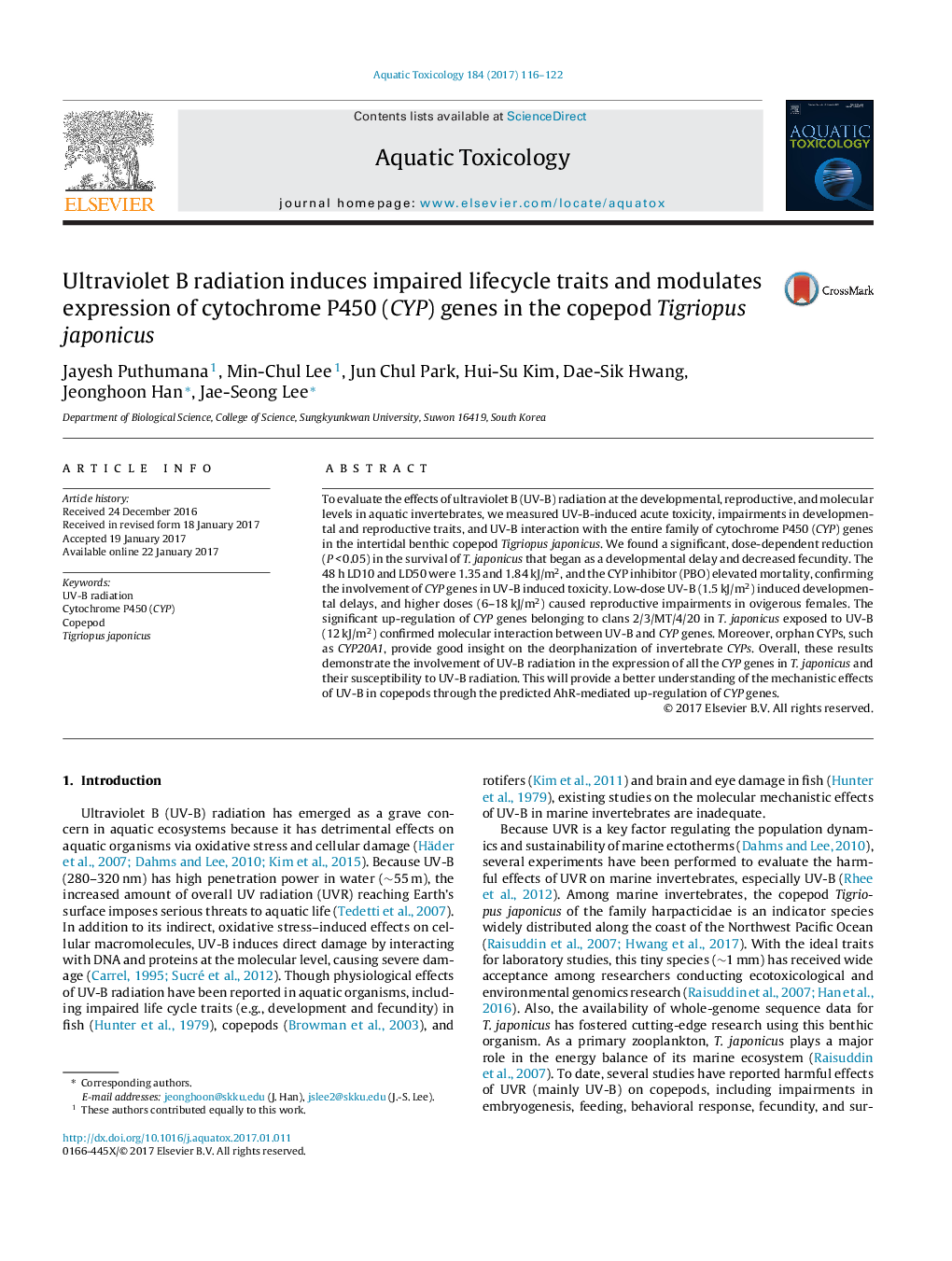| Article ID | Journal | Published Year | Pages | File Type |
|---|---|---|---|---|
| 5764160 | Aquatic Toxicology | 2017 | 7 Pages |
Abstract
To evaluate the effects of ultraviolet B (UV-B) radiation at the developmental, reproductive, and molecular levels in aquatic invertebrates, we measured UV-B-induced acute toxicity, impairments in developmental and reproductive traits, and UV-B interaction with the entire family of cytochrome P450 (CYP) genes in the intertidal benthic copepod Tigriopus japonicus. We found a significant, dose-dependent reduction (PÂ <Â 0.05) in the survival of T. japonicus that began as a developmental delay and decreased fecundity. The 48Â h LD10 and LD50 were 1.35 and 1.84Â kJ/m2, and the CYP inhibitor (PBO) elevated mortality, confirming the involvement of CYP genes in UV-B induced toxicity. Low-dose UV-B (1.5Â kJ/m2) induced developmental delays, and higher doses (6-18Â kJ/m2) caused reproductive impairments in ovigerous females. The significant up-regulation of CYP genes belonging to clans 2/3/MT/4/20 in T. japonicus exposed to UV-B (12Â kJ/m2) confirmed molecular interaction between UV-B and CYP genes. Moreover, orphan CYPs, such as CYP20A1, provide good insight on the deorphanization of invertebrate CYPs. Overall, these results demonstrate the involvement of UV-B radiation in the expression of all the CYP genes in T. japonicus and their susceptibility to UV-B radiation. This will provide a better understanding of the mechanistic effects of UV-B in copepods through the predicted AhR-mediated up-regulation of CYP genes.
Related Topics
Life Sciences
Agricultural and Biological Sciences
Aquatic Science
Authors
Jayesh Puthumana, Min-Chul Lee, Jun Chul Park, Hui-Su Kim, Dae-Sik Hwang, Jeonghoon Han, Jae-Seong Lee,
